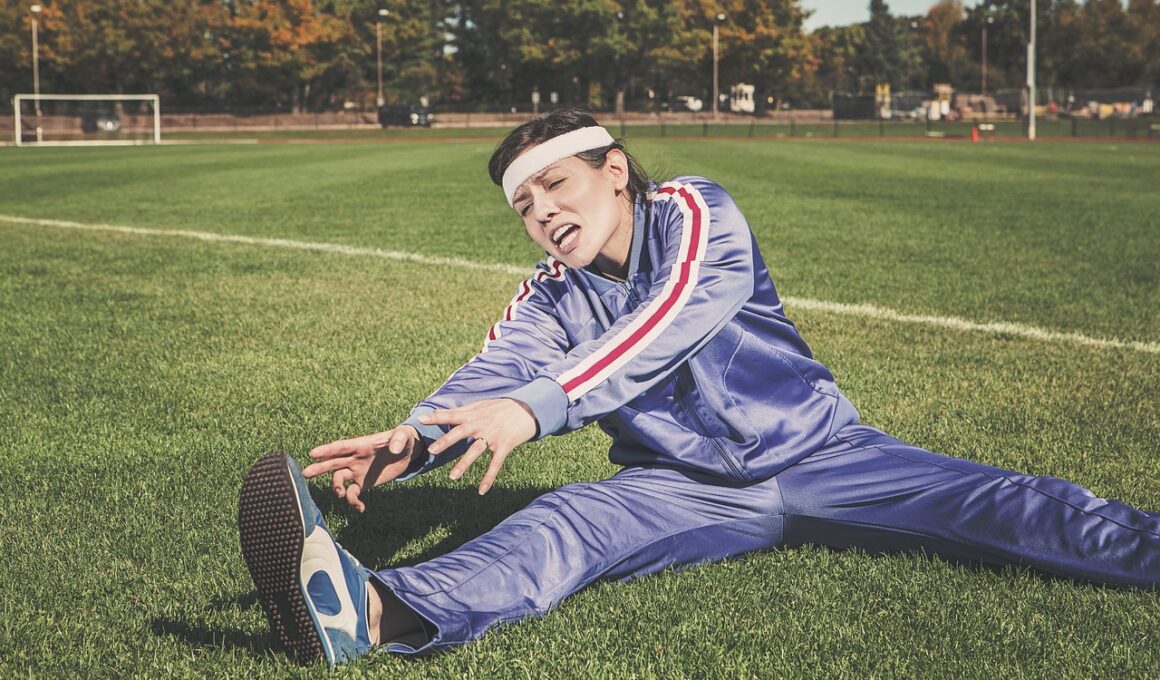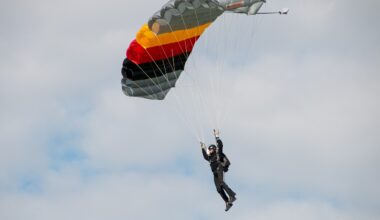Avoiding Common Cold Weather Training Mistakes
Cold weather training offers unique challenges for athletes aiming to enhance their performance. However, many make common mistakes that can lead to injuries or decreased performance. It’s crucial to understand how to properly prepare for the chilly temperatures. One major mistake is neglecting to warm up effectively. Cold muscles are more prone to injuries, so warming up just as you would in warmer conditions is vital. Be sure to engage in dynamic stretches and movements to prepare your body. Additionally, layering your clothing improperly can hamper your performance. Clothing that’s too tight can restrict movement, while clothes that are too loose may allow heat to escape unnecessarily. Always opt for fabrics that wick away moisture to keep your body dry. Lastly, underestimating hydration needs in cold weather is frequent. Despite the cold, hydration remains essential as you lose fluids through breath and sweat. Remember to carry water even on cold days, ensuring you’re performing at your best. Consider emphasizing health, performance, and specific techniques to tailor your cold weather workouts effectively. This will ensure you’re ready to tackle the obstacles present during colder seasons and get the most from your training.
Another common error during cold weather training is ignoring the signs of hypothermia. Many athletes feel invincible, pushing through the cold despite numbing sensations. This can lead to serious health issues. Always be vigilant and assess your body’s signals. Symptoms such as excessive shivering, confusion, and fatigue are indicators that your body is losing heat dangerously. Never hesitate to cut your session short when you feel these signs. Moreover, adopting an inappropriate diet can adversely affect your training. Consuming less food because of the colder temperatures is detrimental. Your body requires energy to stay warm and perform effectively, particularly in adverse weather conditions. Opt for a well-balanced diet rich in carbohydrates and healthy fats. Relatedly, many athletes overlook the need for adequate recovery after workouts in chilling conditions. Exposure to cold can stiffen muscles and joints, increasing injury risk. Implement post-training rituals such as long stretches or warming bath sessions to aid recovery, ensuring you’re fit for future sessions. Finally, remember to properly evaluate your gear and equipment. Cold weather gear should be regularly checked for wear and effectiveness, ensuring it supports your training goals efficiently.
Gear and Equipment Really Matter
Focusing on footwear is equally essential when training in cold weather environments. Many athletes forget that running shoes can lose traction on icy or wet surfaces, which increases the risk of slips and falls. Select shoes designed specifically for cold and slippery conditions, providing sufficient grip and insulation. Additionally, consider investing in traction devices that can easily attach to your regular shoes. These will enhance your grip significantly on icy paths. Furthermore, it’s advisable to take note of your breathing techniques while running in the cold. Inhale through your nose as much as possible. Cold air can irritate the lungs, leading to issues like bronchospasm. Breathing through your nose warms and humidifies the air before it reaches your lungs, helping to prevent these problems. Furthermore, visualize your training at temperatures lower than you may be accustomed to. This mental preparation can ensure that your mind is ready for the additional challenges that cold weather presents. Make use of visualization techniques to imagine overcoming obstacles during your runs or workouts. This serves as a mental rehearsal, enhancing your physical performance when the time comes to participate in actual sessions.
Another aspect often overlooked is adjusting the intensity of workouts in colder conditions. Athletes sometimes follow their regular training intensity, which can be too much for their bodies when temperatures drop. Cold weather can be physically demanding, so it’s essential to modify your routine. Lighter workouts can promote endurance while preserving energy for when the temperatures warm up. Additionally, incorporating cross-training can help mitigate some cold weather training risks. Engaging in non-running activities, such as swimming or cycling in moderate indoor temperatures, can give your body suitable exercise while keeping you safe from the cold. Lastly, a common mistake is neglecting social support. Many athletes find that maintaining motivation can be challenging during winter, but having workout partners can boost accountability and enjoyment. Seek out local athletic groups or teammates who are also interested in cold weather training. This creates a collaborative and supportive environment, encouraging everyone to push through less favorable conditions. In summary, maintaining these key mindsets—awareness of gear, training intensity, and social support—are crucial for optimizing your winter performance. Tailor your approaches to increase safety and maximize results while enjoying your athletic endeavors.
Cold Weather Nutrition Strategies
Nutritional support is a significant factor when striving for success amid cold weather workouts. Many athletes fail to realize that they require specific nutrients to equip their bodies for such challenges. Highly nutritious foods that provide energy are particularly beneficial as they help warm the body. Preparing meals with wholesome ingredients that promote warming sensations is crucial. For instance, incorporating hearty soups, stews, or whole grains provides much-needed carbohydrates and hydration in a warm form while improving overall performance. Furthermore, considering quick snacks before and after training can be advantageous. Foods rich in healthy fats and proteins can boost energy levels while facilitating recovery. Nuts, energy bars, or even a banana can offer a great increase in performance while working outdoors. Don’t overlook meal timing as well; strategizing pre- and post-workout nutrition can enhance energy maintenance. Ensure to fuel your body roughly 30 minutes before embarking on your workout to optimize energy levels. Additionally, consume recovery snacks within 30 to 60 minutes post-training to promote muscle repair and body recovery after cold sessions. Utilize these nutritional strategies to give yourself a competitive edge throughout the winter months.
Finally, many athletes wrongly assume that they need to train outside regardless of the conditions, not considering the safety measures necessary. Recognizing that some days may present hazardous conditions, such as excessive snow or frost, is vital. On such days, indoor training can prove to be a much safer environment. Facilities offer comfort from the cold while providing the opportunity for effective training. Not only does this shift allow you to focus on developing physically during harsh winters, but it may also keep morale high as training becomes less burdensome. Another crucial aspect to consider is recovery methods after outdoor training sessions in the cold. Athletes should incorporate strategies such as warming showers, stretches, or foam rolling to mitigate muscle tightness and promote flexibility. A critical mistake often made is garnishing workouts with excessive exertion without prioritizing proper recovery. Ensure that you provide enough downtime for your body to heal and reinforce muscle strength before your next training session. Overall, understanding both indoor options and post-workout recovery is essential to maintain your physical capability and safety during colder weather training.
Conclusion
By avoiding these common cold weather training mistakes, athletes can enjoy productive workouts and continue to progress toward their athletic goals. Preparation and awareness are key factors in minimizing the risks associated with cold weather exercise. Set your workout goals realistically and ensure that your body is well-prepared for outdoor conditions. Your success hinges on recognizing and planning for various limiting factors, ensuring that your training remains consistent even during the colder months. To wrap up, emphasize the significance of understanding inherent risks in cold weather. Making progress can still happen during winter training, provided you’re aware of your body’s needs, allowing for necessary adjustments. Lastly, self-education on proper techniques, nutrition, and equipment will aid you in achieving your performance targets. Reflecting on the shared tips, engage actively in discussions about techniques that work best for cold weather training within your community. Use your experience to help others navigate through this challenging yet rewarding season, especially if they’re just starting this journey. Winter can be both a challenging and rewarding time for athletes committed to their training while learning to embrace the joys of cold-weather workouts. Stay focused and be safe!



